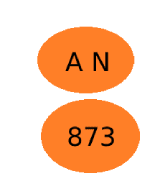Uses
Bosentan is used to treat pulmonary arterial hypertension (PAH, high blood pressure in the vessels that carry blood to the lungs) in adults and children 3 years of age and older. Bosentan may improve the ability to exercise and slow the worsening of symptoms in patients with PAH. Bosentan is in a class of medications called endothelin receptor antagonists. It works by stopping the action of endothelin, a natural substance that causes blood vessels to narrow and prevents normal blood flow in people who have PAH.
Side Effects Of Bosentan
Bosentan may cause side effects. Tell your doctor if any of these symptoms are severe or do not go away:
- headache
- flushing
- runny nose, sore throat, and other cold symptoms
- joint pain
Some side effects can be serious. The following symptoms are uncommon, but if you experience any of them or those listed in the WARNINGS and PRECAUTIONS section, call your doctor immediately or get emergency medical treatment:
- hives; rash; itching; difficulty breathing or swallowing; swelling of the face, throat, tongue, lips, and eyes; hoarseness; fever; swollen lymph nodes; tiredness
- swelling of the feet, ankles, or lower legs, sudden weight gain, more trouble with breathing than normal new or worsening shortness of breath; new or worsening cough with or without blood; chest pain; fast, pounding, or irregular heartbeat fainting dizziness; pale skin; shortness of breath; weakness; fast, pounding, or irregular heartbeat
- Male laboratory animals who were given medications similar to bosentan developed problems with their testicles and produced fewer sperm (male reproductive cells) than normal. It is not known if bosentan will damage the testicles or decrease the number of sperm produced in men. Talk to your doctor about the risks of taking bosentan if you would like to have children in the future.
- Bosentan may cause other side effects. Call your doctor if you have any unusual problems while taking this medication.
Warnings & Precautions
Before taking bosentan:
- tell your doctor and pharmacist if you are allergic to bosentan, any other medications, or any of the ingredients in bosentan tablets or dispersible tablets.
- do not take cyclosporine (Gengraf, Neoral, Sandimmune) or glyburide (DiaBeta, Glynase) while taking bosentan.
- tell your doctor and pharmacist what other prescription and nonprescription medications, vitamins, nutritional supplements, and herbal products you are taking. Be sure to mention any of the following: amiodarone (Nexterone, Pacerone); cholesterol-lowering medications (statins) such as atorvastatin (Lipitor, in Caduet), lovastatin (Altoprev), and simvastatin (Flolopid, Zocor, in Vytorin); diltiazem (Cardizem, Cartia, Diltzac, others); erythromycin (E.E.S., Eryc, PCE); fluconazole (Diflucan); gemfibrozil (Lopid); itraconazole (Onmel, Sporanox); ketoconazole ; rifampin (Rifadin, Rimactane, in Rifater, Rifamate); ritonavir (Norvir, in Kaletra, Viekira Pak, Technivie); voriconazole (Vfend); and warfarin (Coumadin, Jantoven). Many other medications may also interact with bosentan, so be sure to tell your doctor about all the medications you are taking, even those that do not appear on this list. Your doctor may need to change the doses of your medications or monitor you carefully for side effects.
- tell your doctor if you have or have ever had heart failure (condition in which the heart is unable to pump enough blood to the other parts of the body).
- tell your doctor if you are breastfeeding or plan to breastfeed. Your doctor will probably tell you not to breastfeed while taking bosentan.
- if you have phenylketonuria (PKU, an inherited condition in which a special diet must be followed to prevent mental retardation), you should know that the dispersible tablets are sweetened with aspartame, a source of phenylalanine.
Bosentan Dosage
Bosentan comes as a tablet and as a dispersible tablet (tablet that can be dissolved in liquid) to take by mouth. It is usually taken with or without food twice a day in the morning and evening. To help you remember to take bosentan, take it at around the same times every day. Follow the directions on your prescription label carefully, and ask your doctor or pharmacist to explain any part you do not understand. Take bosentan exactly as directed. Do not take more or less of it or take it more often than prescribed by your doctor.
If you are taking the dispersible tablet, place the tablet in a small amount of liquid right before you take it. If your doctor has told you to take a half tablet, break the dispersible tablet carefully on the line. Take the half tablet as directed, and put the other half back in the opened blister in the package. Use the other half-tablet within 7 days. Do not break the dispersible tablet into quarters.
Your doctor will probably start you on a low dose of bosentan and increase your dose after 4 weeks.
Bosentan controls the symptoms of PAH but does not cure it. It may take 1 to 2 months or longer before you feel the full benefit of bosentan. Continue to take bosentan even if you feel well. Do not stop taking bosentan without talking to your doctor. If you suddenly stop taking bosentan, your symptoms may get worse. Your doctor may decrease your dose gradually.
Other
Do not let anyone else take your medication. Ask your doctor any questions you have about refilling your prescription.
It is important for you to keep a written list of all of the prescription and nonprescription (over-the-counter) medicines you are taking, as well as any products such as vitamins, minerals, or other dietary supplements. You should bring this list with you each time you visit a doctor or if you are admitted to a hospital. It is also important information to carry with you in case of emergencies.
Source
All information has been provided courtesy of MedLinePlus from the National Library of Medicine and from the FDA.



